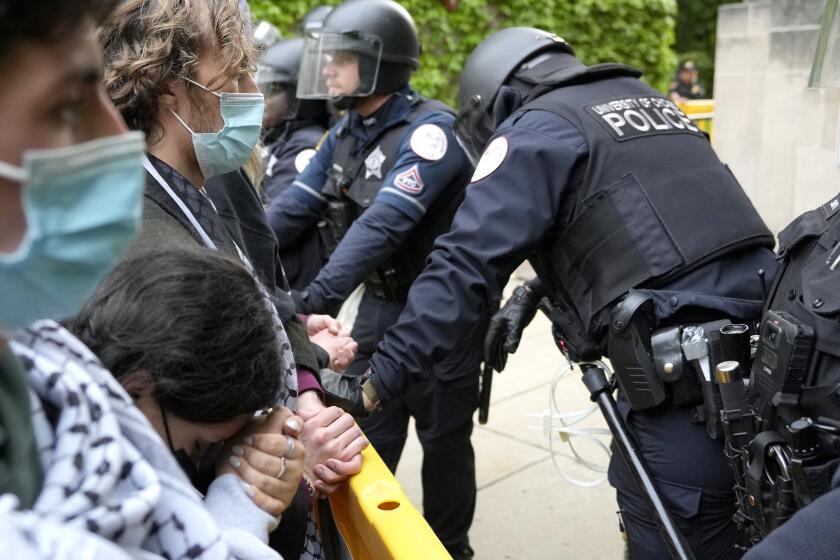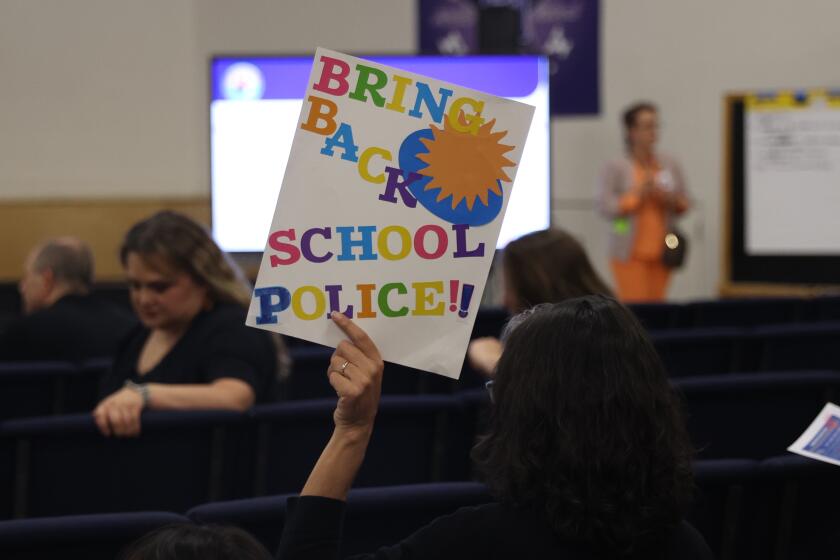Parochial About Schools
Giving the Los Angeles Unified School District’s 100 worst schools an academic boost might seem like a solidly popular idea, a way to raise all boats with the tide. But here in the San Fernando Valley, where zero-sum provincialism sometimes runs roughshod over reasoned discourse, the proposal by new schools Supt. Ruben Zacarias to do just that fell flat among people who want to break up the district. It’s a pity that in this weekend celebrating the nation’s great patriots, those passing themselves off as local patriots offer little more than a rhetoric of selfishness and fear.
Zacarias targeted the district’s 100 worst campuses as he campaigned for the job. Just seven of the schools lie in the Valley. That doesn’t seem to matter to breakup advocates, though, who greeted Zacarias’ announcement by fretting that resources earmarked for Valley schools would be rerouted to help campuses on the other side of the Santa Monica Mountains. If that happened, they vowed, it would be just the kind of abuse that justifies dissolving the political bonds holding the district together. Zacarias says no money will be rerouted and that improvements can be made by changing the way campus administrators spend their existing budgets.
Whether or not Zacarias’ plan is a good one seems almost beside the point. Big-city superintendents across the country have targeted their districts’ worst schools in an effort to raise test scores across the board. In the Valley, the dispute centers more on the district’s limited resources and the perception that Valley schools don’t get enough of them. Anything that threatens, however marginally, what the Valley already gets causes a stir. Valley advocates contend they’re just trying to make sure local schools get their “fair share.” But that’s the kind of narrow thinking that exacerbates the district’s--and the Valley’s--problems.
The notion that one student’s--or school’s--success can come only at the price of another’s undermines the very foundation of public education, which promises kids equal access regardless of how much their parents pay in taxes. In the process, some kids naturally get more attention than others. For instance, imagine a math class with 30 students. Three are having trouble with multiplication. Should the teacher simply ignore those three, knowing that doing so will hobble them in later classes and disrupt learning for others? Or should the teacher spend a little extra time with those students to bring them up to a level where they can contribute to the class?
That, essentially, is the equation here, but in a much larger context. Clearly, it makes sense to help the kids who are struggling because the entire class benefits in the long run. The Valley can ignore the rest of Los Angeles, but it won’t be long before residents and students start to pay a price. Good things for kids in a classroom across town don’t always mean bad things for kids in the classroom across the street.
More to Read
Start your day right
Sign up for Essential California for news, features and recommendations from the L.A. Times and beyond in your inbox six days a week.
You may occasionally receive promotional content from the Los Angeles Times.






